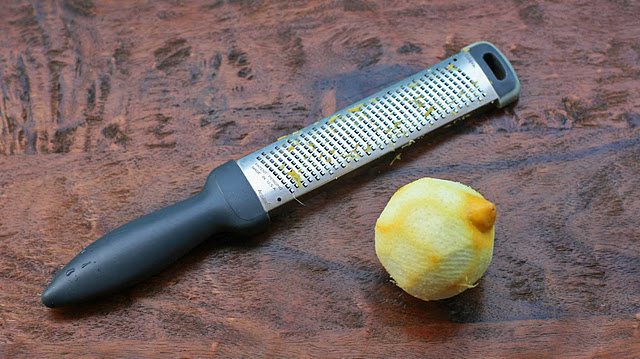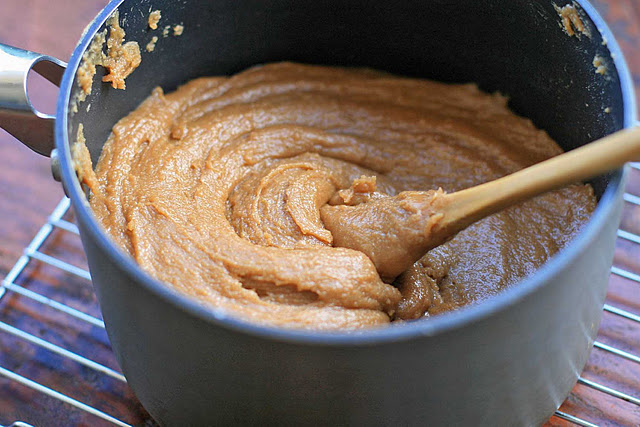 I’d actually planned on taking a break from baking over the holidays. After all, I was traveling and away from my well-stocked gluten-free kitchen. But then my mother decided to try going gluten-free and I knew I wanted to make the transition as easy as possible… especially during the holiday season when there are so many glutinous temptations around.
I’d actually planned on taking a break from baking over the holidays. After all, I was traveling and away from my well-stocked gluten-free kitchen. But then my mother decided to try going gluten-free and I knew I wanted to make the transition as easy as possible… especially during the holiday season when there are so many glutinous temptations around.
So I stopped by a store that sold gluten-free provisions and stocked up on whatever they had, thinking that the results would be the same as when I baked using my usual ingredients and tools at home. Boy was I mistaken. Only then did I understand why a lot of people think of gluten-free baked goods as gritty and unappealing.
I thought it was time to pass along a few tips that will help ensure your gluten-free baking endeavors are a success. These tips are really geared towards novice gluten-free bakers (hi mom!), but I’d love to hear any additional tips or suggestions from seasoned gluten-free bakers in the comments.
 1. Find Ultrafine Gluten-Free Flours.
1. Find Ultrafine Gluten-Free Flours.
I can’t stress this point enough. I’m extremely lucky in that there are dozens of Asian stores that sell ultrafine gluten-free flours within a several mile radius of where I live. In addition, the health food stores sell an excellent brown rice flour in their bulk bins. I almost always buy my white rice flour, tapioca starch, potato starch, and glutinous rice flour from Asian supermarkets. Even in Honolulu these tend to be very inexpensive (about $1.00 or less for a 1-pound bag). I’ve also heard great things about the Authentic Foods superfine rice flours.
For sorghum flour and teff flour I’ve always used the Bob’s Red Mill varieties. Although as much as I love Bob’s Red Mill, I would definitely caution you not to use their stone ground rice flours.. unless you like gritty baked goods. I’m also not a huge fan of the Bob’s Red Mill Gluten-Free All Purpose Baking Mix.. probably because of the bean flours.
 2. Buy Quality Ingredients:
2. Buy Quality Ingredients:
No, I’m not suggesting that you need to buy $20/pound anything to get good results, but sometimes you really can get much much better results just by spending a little bit more. For instance, the difference in taste between Nestle or Hershey chocolate chips and the Ghiradelli bittersweet chips (which really only cost a little bit more) is substantial. Ditto for unrefined sugar and coffee. Have some fun and do a blind taste test to see what is worth the splurge and what isn’t.
 3. “Splurge” on Tools that Make Your Life Easier (and Your Baked Goods Better):
3. “Splurge” on Tools that Make Your Life Easier (and Your Baked Goods Better):
I’m not going to say you need to go out and buy a Kitchenaid mixer or a Vitamix blender (although I love both!), but there are a couple low-cost tools that I consider to be total kitchen necessities. For instance, an immersion blender and a Microplane zester, will make your life so much easier. Ditto for a pastry cutter/blender, which I somehow still haven’t acquired despite the fact that I make a mental note to buy one every single time I make shortbread, biscuits, or a pie crust.
 4. Don’t Be Afraid of Failure/Learn to Improvise.
4. Don’t Be Afraid of Failure/Learn to Improvise.
Sometimes your gluten-free baked goods won’t turn out, even if you follow a recipe carefully. There are plenty of times I’ve painstakingly followed tested recipes from a trusted gluten-free source and the results have been total flops. The more you bake the easier it’ll be for you to tweak recipes to your liking and/or spot when a recipe is headed for disaster. You’ll also get more comfortable substituting flours to add more whole grains, lighten the result, add more protein, etc.
Hope these tips have helped some of you… with all the great gluten-free products and tools out there, there’s really no reason to be eating substandard baked goods! I’m sure I’ve forgotten some other basic tips, so I’ll be sure to update this post as soon as I think of other suggestions. And again, I’d love to hear other tips from readers… I’m sure you guys could all teach me a lesson or two 🙂